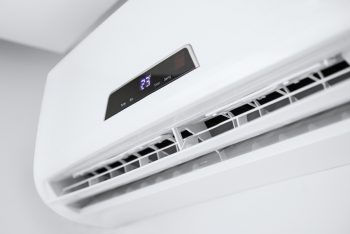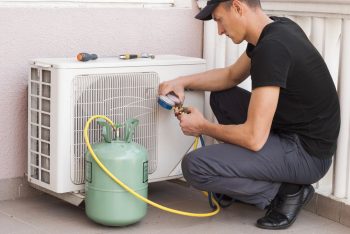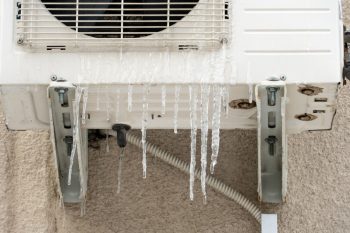
Keurig coffee machines are a staple in many homes and offices due to their convenience and variety of flavors. However, like any appliance, they can sometimes run into issues. If you’re asking, “Why is my Keurig coffee machine not working?” you’ve come to the right place. In this article, we’ll cover the most common problems and how to fix them.
Your Keurig coffee machine may not be working due to a variety of reasons including improper setup, a need for a reset, clogs, mineral buildup, misassembly, trapped coffee grounds, air bubbles, insufficient water, or a clogged exit needle. Troubleshooting steps include checking the power source and water level, removing air bubbles, cleaning the needles, running water-only brew cycles, descaling and cleaning the machine, checking for clogs, and resetting the machine. If these steps don’t work, contact Keurig Customer Service. Regular maintenance can help prevent these issues.
Common Keurig Coffee Machine Problems
There are several common problems that could cause your Keurig coffee machine to stop working:
- Improper Setup or Connection: Make sure the machine is connected properly to a power source and the water reservoir is installed correctly.
- Need for a Reset: Sometimes, all your machine needs is a hard reset. This can be done by unplugging it and plugging it back in.
- Clogged Machine: If your Keurig is brewing slowly or not at all, it might be clogged.
- Mineral Buildup: Hard water can cause mineral buildup inside the machine, affecting its performance.
- Misassembly or Missing Parts: The machine may not brew if some parts are missing or not connected properly.
- Trapped Coffee Grounds: Coffee grounds can get trapped in various parts of the machine, causing it to malfunction.
- Air Bubbles: Air bubbles in the water line can prevent the machine from brewing coffee properly.
- Insufficient Water: The machine won’t brew coffee if there isn’t enough water in the reservoir.
- Clogged Exit Needle: If you find coffee grounds in your cup, it might be due to a clogged exit needle.
How to Troubleshoot a Non-Working Keurig Coffee Machine
If your Keurig coffee machine isn’t working, try these troubleshooting steps:
- Check the Power Source: Ensure the machine is properly connected to a power source.
- Check the Water Level: Make sure the water reservoir is filled and properly seated.
- Remove Air Bubbles: Turn off the machine, unplug it, and gently shake it to release any trapped air bubbles.
- Clean the Needles: Use a paperclip or a similar tool to clean the entrance and exit needles.
- Run Water-Only Brew Cycles: Run a few brew cycles without a K-cup to flush out any debris.
- Descale the Machine: Regularly descale your Keurig to remove mineral buildup. You can use a descaling solution or a mixture of white vinegar and water.
- Clean the Machine: Disassemble and clean the removable parts, such as the water reservoir, drip tray, and K-cup holder.
- Check for Clogs: Inspect the machine for any clogs or debris that may be obstructing the brewing process.
- Reset the Machine: Unplug the machine, wait a few moments, and plug it back in to reset it.
If your Keurig is still not working after trying these steps, it might be best to contact Keurig Customer Service for further assistance.
Regular Maintenance Can Prevent Issues
Regular cleaning and maintenance of your Keurig Coffee Machine can prevent many common issues. This includes cleaning the external components, descaling the machine, cleaning the water reservoir, and replacing the water filter. By performing regular maintenance, you can ensure your Keurig continues to brew delicious coffee every time.
Conclusion
While Keurig coffee machines are generally reliable, they can sometimes run into issues. Whether it’s a minor problem like a clogged needle or a more serious issue like a machine that won’t power on, most problems can be fixed with a little troubleshooting. However, if you’re still having trouble with your Keurig after trying these steps, it might be time to contact Keurig Customer Service or consider a replacement.
Frequently Asked Questions
How often should I descale my Keurig coffee machine?
The frequency of descaling your Keurig coffee machine depends on the hardness of your water source. If you’re using hard water, it is recommended to descale every 3-6 months. However, if you’re using soft water, you can extend it to every 6-12 months.
Can I use any vinegar to descale my Keurig?
While any vinegar can technically be used for descaling, white vinegar is the most recommended due to its high acidity and lack of color. This ensures that it effectively removes mineral buildup without leaving any residue or color behind.
Is it safe to use a paperclip to clean the needles of my Keurig?
Yes, it’s safe to use a paperclip to clean the needles of your Keurig. However, you need to be careful not to damage the needles in the process. Make sure to gently insert and rotate the paperclip to dislodge any trapped coffee grounds or debris.
What should I do if my Keurig machine is not turning on at all?
If your Keurig machine is not turning on, first ensure it’s properly connected to a power source and the power outlet is functioning. If it’s still not turning on, it could be a more serious electrical issue and you should contact Keurig Customer Service for further assistance.
Can I use bottled water in my Keurig coffee machine?
Yes, you can use bottled water in your Keurig coffee machine. In fact, using bottled or filtered water can reduce the frequency of descaling as they generally have less mineral content compared to tap water.












